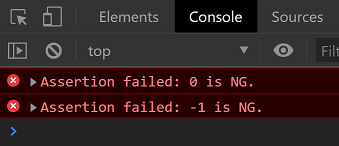Many ways to use `console`
Bài đăng này đã không được cập nhật trong 5 năm
A wide range of methods are provided for the Console object
console.log(console);
↓
console {debug: ƒ, error: ƒ, info: ƒ, log: ƒ, warn: ƒ, …}
memory: (...)
debug: ƒ debug()
error: ƒ error()
info: ƒ info()
log: ƒ log()
warn: ƒ warn()
dir: ƒ dir()
dirxml: ƒ dirxml()
table: ƒ table()
trace: ƒ trace()
group: ƒ group()
groupCollapsed: ƒ groupCollapsed()
groupEnd: ƒ groupEnd()
clear: ƒ clear()
count: ƒ count()
countReset: ƒ countReset()
assert: ƒ assert()
profile: ƒ profile()
profileEnd: ƒ profileEnd()
time: ƒ time()
timeLog: ƒ timeLog()
timeEnd: ƒ timeEnd()
timeStamp: ƒ timeStamp()
context: ƒ context()
Symbol(Symbol.toStringTag): "Object"
get memory: ƒ ()
set memory: ƒ ()
__proto__: Object
Even we have these amount of methods, I still feel that something is lurking in the shadows besides the log().
So this time I will reveal some hidden methods
Objective:
To have a better understanding about how to use methods of console
Assert
If the value of the first argument is false, output is error.
const method = (num) => {
console.assert(num > 0 , num + ' is NG.');
}
method(1);
method(0);
method(-1);

clear()
Clear the console
console.log('hoge');
console.log('hoge');
console.clear();
console.log('fuga');
console.log('fuga');

count()
Output is how many time the function is called
const method = () => {
console.count('counter');
}
method();
method();
method();

error()
An error is output
console.error('error');

group() / groupEnd()
Start with an indent, closes with an indent
console.group('Indent1');
console.log('hoge');
console.log('hoge');
console.group('Indent2');
console.log('fuga');
console.log('fuga');
console.groupEnd();
console.log('hoge');
console.log('hoge');
console.groupEnd();

table()
The log is output in a table form:
const ary = [100,200,300,400];
const obj = {
'a':100 ,
"b":200 ,
"c":300 ,
'd':400
};
console.table(ary);
console.table(obj);

warn()
Output a warning
console.warn('warn');

Conclusion
What do you think?
You can see that the Console object is not just for outputting logs.
Something like table() or group() seems to be more convenient than log() depending on how you use it.
We hope you find it helpful to master the console
All rights reserved